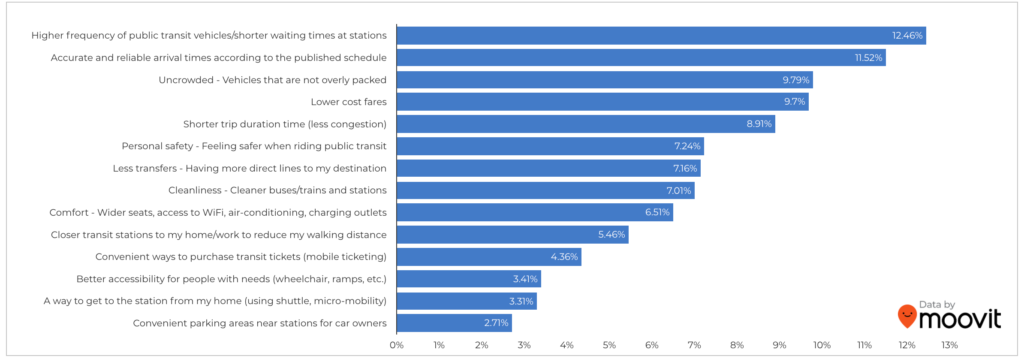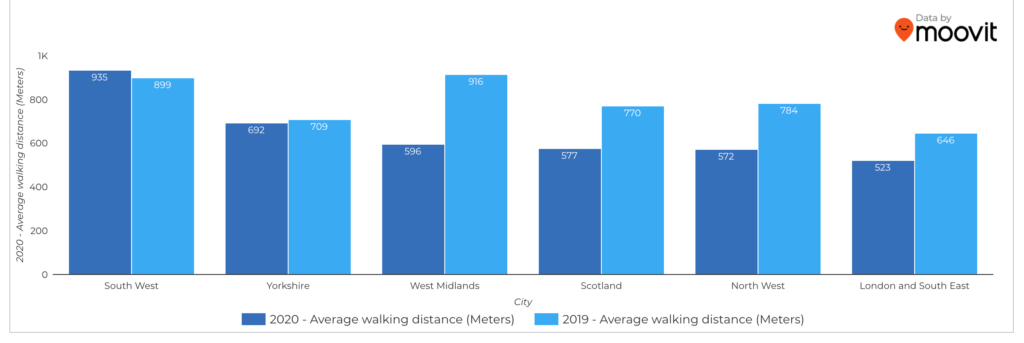Mobility-as-a-Service (MaaS) solution provider Moovit has released its 2020 public transport report, which highlights the transit trends and effects Covid-19 on public transport.
The report covered public transit durations, commuting walking distances and the number of transfers people made daily. It also asked what would encourage more public transport use, micromobility frequency and mobile payment demand.
Its UK data showed Londoners still endure the longest public transport commutes in the country even despite the pandemic. According to the report, bus users in the capital now want to know how crowded a bus will be before they board, with nearly half (49%) citing this as a key factor. Furthermore, over 8% of commuters in London and the South East said they no longer use public transport.
The study asked those surveyed what would encourage them to use public transit more often. Respondents said lower waiting times was essential with spacious vehicles and accurate schedules also being important.

When asked about using an app to pay for public transport use, Scotland led the way with nearly half (49%) saying they would switch to mobile payment methods. Respondents in the South West were also for contactless payments whilst in the West Midlands people were less in favour.
Regarding active travel options, Moovit found that the various lockdowns had affected walking distances covered across the UK, with the average walking distance falling in all but one area – the South West.

The research also showed that more work is required to encourage UK users to try an e-bike or an e-scooter. When asked how often people use micromobility options in their city, the majority of people in all regions said never – 78% in the South East and Scotland, 81% in the West Midlands and 84% in the North West.
Yovav Meydad, Moovit’s chief growth and marketing officer, said: ‘We’re living in a time where data is more important than ever before, especially in the public transportation industry, big data can help cities and transit agencies gain insights into what riders need in order to increase mass transit use.
“This report is a great tool for transit agencies, operators, and municipalities to learn about the services they can offer to fill in the gaps and keep their city running.”



